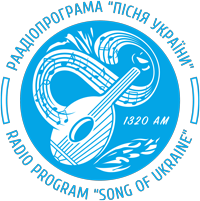Yuriy Shchur
The Soviet government, like no one else, understood the importance of the “correct” interpretation of historical events. Anyone who considers the study and coverage of various, and even more so, key, events in the life of the country to be unimportant is mistaken. Throughout the existence of this state, the leaders of the USSR, through the special services, controlled that the myth of fraternal Slavic peoples, the desire of Ukrainians to “unite with the fraternal Russian people” was firmly established in the minds of ordinary citizens. A Ukrainian was supposed to perceive himself only as a part of the Soviet (Russian) people. The consequences of such a policy are obvious, and to see them, it is enough to look at the map of Ukraine with the territories occupied by Russia and familiarize yourself with the actions of the fifth column.
One of the key myths of the Russian/Soviet government was the annexation of Cossack Ukraine after the Pereyaslav Rada of 1654. This event was supposed to legitimize, from a historical point of view, the state of Ukraine “soldered” to Russia. In 1953, on the eve of the anniversary date – the tercentenary of the Pereyaslav Rada, a special resolution of the CPSU Central Committee was adopted. It was published under the title “Theses to the 300th Anniversary of the Reunification of Ukraine with Russia (1654-1954), Approved by the CPSU Central Committee”. After that, in the best traditions of Soviet historiography, historians in the USSR began to defend previously false postulates in their works. The material was always selected in a rather one-sided and biased manner. Real historical events were distorted and adjusted to fit the “Theses”. Well-known and completely indisputable facts were hidden from the reader. Among other things, the thesis about the alleged confirmation by the Pereyaslav Council of the so-called desire to “unite” Ukraine with Russia was included in the indisputable dogmas.
The Pereyaslav Council, the historical significance of which was rather exaggerated, was considered in every work on this topic as a natural result and as a summary of the entire previous history of the Ukrainian people, the main historical goal of which was supposedly the desire to become part of the Muscovite state. The obligatory formula was: “This historical act (i.e., the Pereyaslav Council) completed the long struggle of the freedom-loving Ukrainian people against foreign oppressors, for reunification with the Russian people in a single Russian state.”
Anyone who thought otherwise, who had the courage to speak about the distortion of history, was declared an enemy. Accordingly, the work of the relevant specialists – employees of the Soviet special services – was directed against them. If mass actions were planned, such work only intensified.
On December 16, 1953, the USSR Ministry of Internal Affairs issued instructions No. 102 on ensuring state security during the celebration of the 300th anniversary of the “unification of Ukraine and Russia”. The Kherson KGB Department, accordingly, reported on the measures taken to implement the instructions from Moscow.
First of all, the KGB officers had to ensure that the holiday was not spoiled by Ukrainian nationalists. Accordingly, the regional KGB Department sent the most qualified agents “Vasya”, “Smely” (Ukrainian: “Smelyvy”), “Patriotka” (Anna Kruba from Lviv region), “Valya” and others to the Holoprystan, Kakhovka, Berislavsky, Novo-Vorontsovsky and other districts, as well as a special agent from the KGB of the Ukrainian SSR “Kornelia”.
Agent “Smely” began to develop a connection to the nationalist underground Anastasia Petyakh, who was in an illegal position in 1944-1946. Anastasia’s sister Kateryna was also in the nationalist underground, who also ended up in the Kherson region after resettlement. Their brothers Pavlo and Petro were members of the OUN, and had been abroad since 1944. Accordingly, the security officers considered the option that foreign intelligence could drop the brothers into the Kherson region, where they already had a base for hiding.
Successful development was hindered by Anastasia’s sympathy for another young man, so the security officers were forced to send “Smely” to Kateryna with the task of instilling trust in her and other relatives-respondents.
Also “on the radar” of the KGB officers was a native of the Naddvirnyansky district of the Ivano-Frankivsk region, Dmytro Popovych, who lived in the Kherson region under the assumed surname Solovey. He arrived in the region in 1953, and after him, a request was received in the Kalynivskyi district for his search as a person who had avoided deportation outside Ukraine and had left for the Kherson region without permission.
The intercepted letter from Popovych to his father contained the following lines: “I have now decided to leave my beloved Carpathians for the Kherson region, where I will be well. I am going with my friends: Mykhas, his sister, a neighbor, a girlfriend and another one who walks and rides with me.” It was this wording that aroused suspicion among the KGB officers. Later they established that Popovych’s father had been evicted as the head of a family of nationalists (“enemies of the people”), and accordingly was subject to a more thorough check.
Thanks to information from the Nadvirniansky district, it was established that Popovych belonged to the OUN. However, the local Chekists asked their Kherson colleagues not to conduct Popovych-Solovya’s development on their own, and wait for their operative to arrive.
Agent “Valya”, who was recruited from among the displaced persons, gathered information about another displaced person from the Lviv region, Anastasia Kardyban. The first thing that caught the eye was that she arrived on her own, bypassing the planned resettlement procedure. “Valya” informed the Chekists that the object of the development was in the OUN underground until 1951, where she was the senior in a group of girl-signals, had organizational ties with the OUN members “Soloveyka”, “Grom”, “Bayan” and others.
In parallel with these operational developments, KGB officers were preparing to recruit new agents to increase their operational capabilities. Among the plans for 1954 was the intention to recruit Marko Rajko, a native of Chernihiv Oblast, who was registered as a Ukrainian nationalist. He was interesting because during the German occupation he lived in Crimea and worked in the “Bureau of Assistance to the Ukrainian Population” in Simferopol. In 1943, he was recruited into the OUN by Hryhoriy Volchak and was given the task of creating an underground in Kerch. It is unknown whether he created an underground. After the Soviets occupied the Crimean peninsula, Marko Rajko was mobilized into the Red Army and remained in Germany until 1946 after the end of the war. The Chekists believed that Rajko knew all the leaders of the nationalist underground in Crimea and was subordinate to Vasyl Kuk (“Lemish”). The Chekists wanted to recruit Rajko to search for the latter.
As part of preparations for the celebration of the 300th anniversary of “unification,” KGB officers reported to Kyiv about the program of events from May 16 to 23, 1954, and a plan to counter attempts by Ukrainian nationalists to spoil such a “holiday.” On May 16, a citywide rally of pioneers was to be held at the Spartak stadium in Kherson, and a parade of ships was to be held on the Dnieper River. On May 18, a jubilee session of the city and regional councils was to be held in the building of the regional drama theater. The next day, a rally in Kherson to mark the opening of the monument to Bohdan Khmelnytsky. On May 23, a rally of workers from the regional center at Spartak.
To ensure that these days and events passed without excesses, the KGB Directorate took the following measures
- They singled out the most important cases of operational registration of persons suspected of belonging to foreign intelligence, the Ukrainian nationalist underground and other “anti-Soviet” organizations and groups. All these people were surrounded by agents. The agents were transferred to a regime of more frequent meetings with supervisors.
- Also, agent-operational work was intensified to search for persons who could potentially commit terrorist acts and other sabotage.
- At the largest industrial facilities in Kherson, KGB officers were put on duty on holidays. The Chekists feared sabotage by opponents of the Soviet government.
- In the regional center, five mobile groups of KGB operatives were created at the city police departments to patrol the streets in order to promptly detect anti-Soviet leaflets, “nationalist” (apparently blue-and-yellow) flags, and eliminate anti-Soviet inscriptions on the walls of houses and public places.
- Two more operational groups were created in case of enemy agents being transferred by air or water.
- The necessary number of operatives was allocated to guard the rostrum during the opening of the monument and the presidium during the Session.










